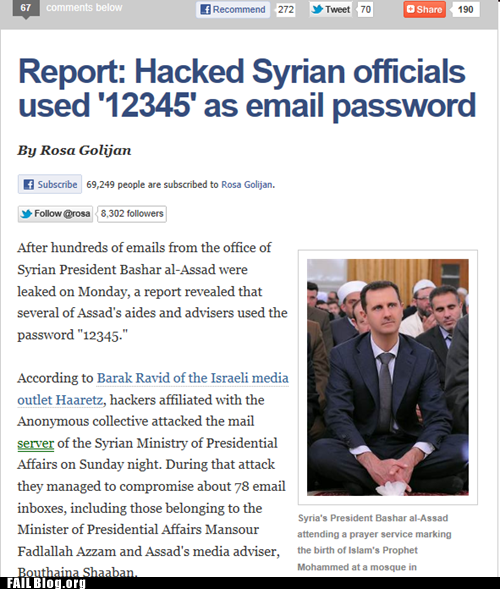As a professional URI aficionado I deal with various levels of ignorance on URI percent-encoding (aka URI encoding, or URL escaping).
Worse than the lame blog comments hating on percent-encoding is the shipping code which can do actual damage. In one very large project I won't name, I've fixed code that decodes all percent-encoded octets in a URI in order to get rid of pesky percents before calling ShellExecute. An unnamed developer with similar intent but clearly much craftier did the same thing in a loop until the string's length stopped changing. As it turns out percent-encoding serves a purpose and can't just be removed arbitrarily.
Percent-encoding exists so that one can represent data in a URI that would otherwise not be allowed or would be interpretted as a delimiter instead of data. For example, the space character (U+0020) is not allowed in a URI and so must be percent-encoded in order to appear in a URI:
http://example.com/the%20path/
http://example.com/the path/
For an additional example, the question mark delimits the path from the query. If one wanted the question mark to appear as part of the path rather than delimit the path from the query, it must be percent-encoded:
http://example.com/foo%3Fbar
http://example.com/foo?bar
/foo" from the query "bar". And in the first, the querstion mark is percent-encoded and so
the path is "/foo%3Fbar".
Awesome faux trailer for Psychonauts as Inception. Wish I had made the connection before - there’s a ton of overlap.
INCEPTIONAUTS (by FineLeatherJackets)
Most existing DRM attempts to only allow the user to access the DRM'ed content with particular applications or with particular credentials so that if the file is shared it won't be useful to others. A better solution is to encode any of the user's horrible secrets into unique versions of the DRM'ed content so that the user won't want to share it. Entangle the users and the content provider's secrets together in one document and accordingly their interests. I call this Blackmail DRM. For an implementation it is important to point out that the user's horrible secret doesn't need to be verified as accurate, but merely verified as believable.
Apparently I need to get these blog posts written faster because only recently I read about Social DRM which is a light weight version of my idea but with a misleading name. Instead of horrible secrets, they say they'll use personal information like the user's name in the DRM'ed content. More of my thoughts stolen and before I even had a chance to think of it first!

This is a great screenshot for IT departments to display at new employee orientation (via FAIL Nation: Probably Bad News: loln00bs)
As a professional URI aficionado I deal with various levels of ignorance on URI percent-encoding (aka URI encoding, or URL escaping). The basest ignorance is with respect to the mere existence of percent-encoding. Percents in URIs are special: they always represent the start of a percent-encoded octet. That is to say, a percent is always followed by two hex digits that represents a value between 0 and 255 and doesn't show up in a URI otherwise.
The IPv6 textual syntax for scoped addresses uses the '%' to delimit the zone ID from the rest of the address. When it came time to define how to represent scoped IPv6 addresses in URIs there were two camps: Folks who wanted to use the IPv6 format as is in the URI, and those who wanted to encode or replace the '%' with a different character. The resulting thread was more lively than what shows up on the IETF URI discussion mailing list. Ultimately we went with a percent-encoded '%' which means the percent maintains its special status and singular purpose.
Remember when they killed off Superman? One of the guys behind Chronicle has made this video explaining that whole thing. Kind of like Drunk History but less drunk and more nerdy (via Death and Return of Superman)
Library of simple and lovely icons available in smaller form for free under CC BY.
I hadn’t heard of “Social DRM” (described in this article). Sounds like my blackmail DRM idea.
Crushable has the video from the Cinefamily Pete and Pete tribute and panel. Also, AV Club is now inspired to have a Pete and Pete cast and crew reunion.
This is Django Reinhardt’s Gypsy swing from the 30s and 40s on archive.org and it is all in the public domain. I didn’t know the term for the genre so it took me a while to find this.
There’s weird stuff you’d think is public domain but isn’t including Martin Luther King Jr.‘s “I Have a Dream” speech. FTA: ”If you want to watch the whole thing, legally, you’ll need to get the $20 DVD.
That’s because the King estate, and, as of 2009, the British music publishing conglomerate EMI Publishing, owns the copyright of the speech and its recorded performance.”